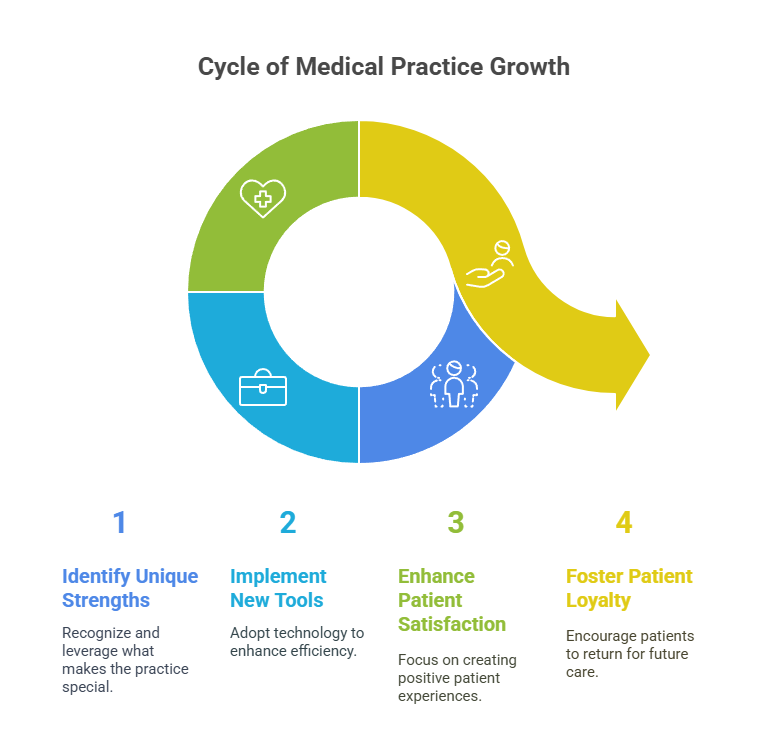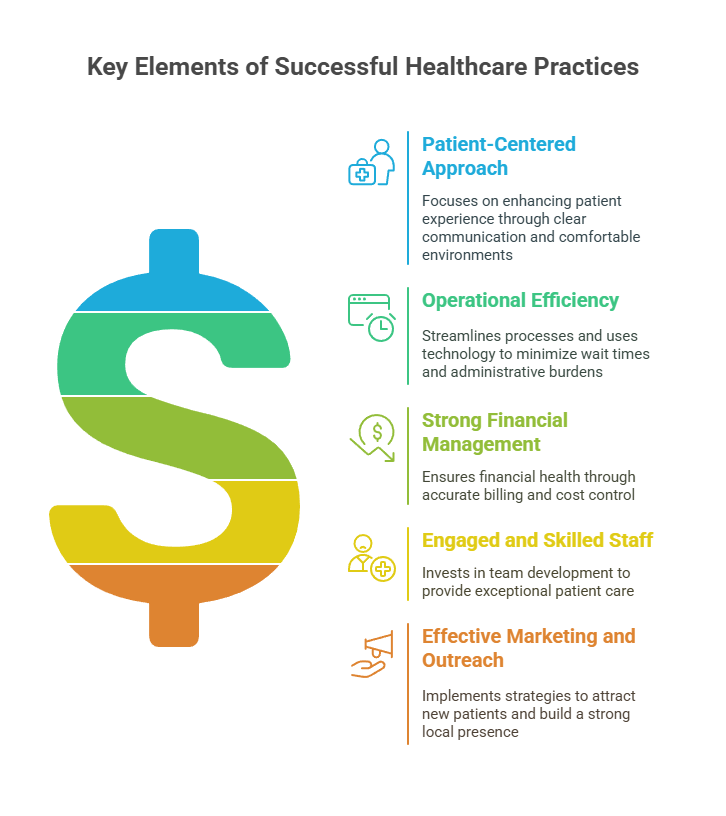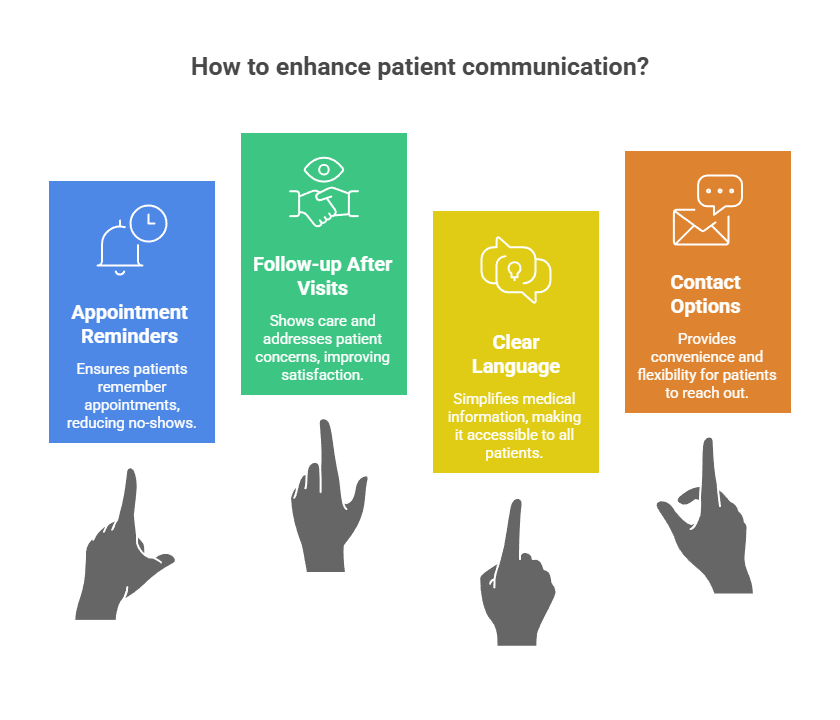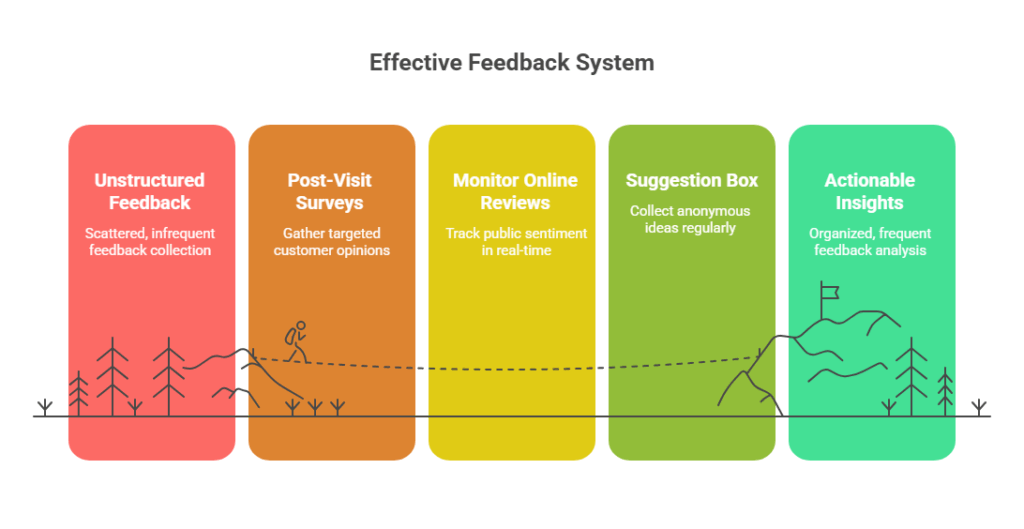- Dr. Vida Puodziunas
- Category - Medical Practices

Want to make your medical practice better? It’s not just about being a good doctor anymore. The world of healthcare is always changing, with new tech and different patient ideas. So, to really do well, medical practices need to think smart about how they run things. This article highlights easy, effective ways to grow and strengthen your medical practice.

Successful medical practices don’t just happen; they are built on a foundation of specific principles and consistent effort. It’s about more than just providing good medical care; it involves a holistic approach to operations, patient interaction, and business strategy. Many practices struggle because they focus solely on the clinical aspect, overlooking the critical business components that drive growth and sustainability. Understanding these distinctions is the first step toward implementing effective medical practice solutions that can transform a struggling clinic into a thriving one.
Success in a medical practice extends far beyond positive clinical outcomes. While patient health is paramount, a truly successful practice also demonstrates financial stability, operational efficiency, and high patient satisfaction. It’s about creating an environment where patients feel valued and staff are motivated. This broader definition of success requires attention to various aspects, from appointment scheduling to billing processes.
A practice’s ability to adapt to changing healthcare landscapes and patient expectations is a key indicator of its long-term viability. This typically means embracing new technologies and optimizing current processes to enhance the patient experience. It’s not enough to simply treat illnesses; practices must also cultivate a positive experience that encourages patient loyalty and referrals. This holistic view helps practices implement medical best practices across all departments.

High-performing medical practices share several common characteristics that set them apart. These traits contribute to their ability to attract and retain patients, maintain a healthy financial standing, and provide excellent care. It’s about creating a well-oiled machine where every component works in harmony.
Successful medical practices understand that continuous improvement is not an option, but a necessity. They continuously evaluate their performance, pinpoint improvement opportunities, and adapt to meet changing patient expectations. Taking a proactive approach helps them stay effective and relevant in today’s rapidly changing healthcare landscape.
Strategic planning is vital for any medical practice aiming for sustained success. This involves setting clear goals, developing actionable plans, and regularly evaluating progress. It’s not a one-time event but an ongoing process that allows practices to respond to market changes and internal challenges. Adaptability is equally important; the healthcare industry is constantly evolving, with new regulations, technologies, and patient demands emerging regularly. Practices that can quickly adjust their strategies and operations are better positioned to thrive. This might involve seeking medical practice consulting services to gain external perspectives and insights. Understanding medical practice standards and continuously asking medical practice questions about current operations are crucial for sustaining a competitive edge and long-term success.
Technology is not just a buzzword in healthcare anymore; it’s a core part of how medical practices run efficiently and serve patients better. Using the right tools can really change how things work, making daily tasks smoother and freeing up staff to focus on patient care. It’s about making smart choices that help everyone.
Moving to EHRs is a big step for any practice. These systems keep all patient information in one digital place, from medical history to lab results. This means doctors and nurses can quickly get the information they need, which helps them make better decisions about patient care. It also makes sharing information with other providers easier, leading to more coordinated care. Plus, it cuts down on paper, which is good for the environment and your storage space.
Patients today expect convenience, and online scheduling delivers just that. Allowing patients to book appointments themselves, anytime, reduces the number of calls your front desk receives. By automating simpler tasks, staff can dedicate their efforts to more strategic work. Telemedicine platforms are also a game-changer. They let you do virtual visits, which is great for follow-ups or minor issues. Patients love the flexibility, and it can expand your reach beyond your local area. It’s a win-win for everyone involved.
Practice management software is like the central nervous system for your office. It handles everything from billing and insurance claims to patient reminders and inventory. Automating these tasks means fewer errors and less time spent on paperwork. For example, automated billing can send out invoices and follow up on payments without staff needing to manually track everything.
This kind of efficiency lets your team spend more time with patients and less time on administrative chores.
Modern medical practices need to think about how technology can make their operations better. It’s not just about having the latest gadgets; it’s about choosing systems that truly help your team and your patients. When technology is used well, it can greatly improve your practice’s efficiency and boost patient satisfaction.
Making sure patients are happy is a big deal for keeping them around and getting new ones. When people feel good about their care, they tell others. It’s like free advertising, but better. You want to make every visit smooth, from when they walk in to when they leave. This means short wait times, clear communication, and a friendly staff. Think about it: if you go somewhere and it’s a hassle, you probably won’t go back. Medical practices are no different. A good experience builds trust, and that’s super important in healthcare.
A positive patient experience goes beyond just good medical care; it includes every interaction a patient has with the practice. This holistic approach helps build lasting relationships and encourages loyalty.

Good communication is key. Patients need to know what’s going on with their health, their appointments, and their bills. It’s not just about talking; it’s about listening too.

How do you know if patients are happy? You ask them! Getting feedback is super important because it tells you what’s working and what’s not. But just asking isn’t enough; you have to actually do something with what you learn.
Here’s a simple way to look at it:
| Feedback Method | Frequency | Actionable Insight |
| Post-visit surveys | Weekly | Identify common pain points |
| Online reviews | Daily | Monitor public perception |
| Suggestion box | Monthly | Capture anonymous ideas |
When you get feedback, look for patterns. If a lot of people are saying the same thing, that’s probably something you need to fix. And when you fix something, let your patients know. It shows you care about their experience.
Attracting new patients is a big deal for any medical practice. It’s not just about putting up a sign anymore. You really need to think about how people find services today. Most folks start their search online, so your practice needs to be visible there. This means using information to guide your marketing efforts, not just guessing what might work. Understanding what potential patients are looking for and where they are looking is key to getting them through your door.
Getting found online often starts with search engines. When someone types in “doctor near me” or “pediatrician in [your city],” you want your practice to show up high on that list. This isn’t magic; it’s about making sure your website and online listings are set up correctly. Think about the words people use when they’re looking for a doctor. Those are the words you want to include on your website and in your online profiles. It’s also important to have accurate information everywhere your practice is listed online, like your address, phone number, and hours.
Inconsistent information can confuse both people and search engines. Regularly checking and updating these details can make a big difference in how easily new patients find you. Online presence is a must.
Once your basic online presence is solid, you can start thinking about more direct ways to reach people. Digital advertising lets you show your ads to very specific groups of people. For example, if you’re a pediatrician, you can target parents in your local area. If you specialize in a certain condition, you can target people who have shown interest in that condition online. Platforms like Google and Facebook have powerful tools that let you do this. Managing your budget and tracking results allows you to make data-driven adjustments for improved ad success. It’s a way to put your message directly in front of the people most likely to need your services.
Social media isn’t just for sharing vacation photos anymore; it’s a place where people connect and get information. For a medical practice, social media can be a way to build trust and show a more human side of your practice. You can share health tips, answer common questions, or even introduce your staff. It’s not about selling, but about building a community and being a helpful resource.
When people see your practice as a reliable source of information, they’re more likely to consider you when they need medical care. Consistency is important here; regularly posting helpful content keeps your practice in people’s minds. It’s about being present where your potential patients are spending their time.
Marketing a medical practice today means being smart about where you put your efforts. It’s not just about getting new patients in the door, but about building a reputation that makes people want to choose your practice. Data helps you pinpoint effective strategies so you can focus your efforts and budget where they matter most. It’s a continuous process of learning and adjusting to meet the needs of your community.
What other people say about your practice matters a lot. Think about it: when you’re looking for a new restaurant or a new service, you probably check out the reviews, right? The same goes for medical practices. Good reviews on Google, Yelp, and your site play a major role in bringing in new patients. It’s like getting a personal recommendation from someone you trust. You should make it easy for satisfied patients to leave reviews. Sometimes, just asking them nicely can make a big difference. And if you get a negative review, it’s essential to reply with professionalism while working to resolve the concern. It demonstrates your dedication to listening to patients and delivering quality care.
Finally, all this marketing effort isn’t just about doing things; it’s about seeing if those things are actually working. This is where the “data-driven” part comes in. You need to track things like how many people are visiting your website, where they’re coming from, how many new patient calls you’re getting, and which marketing activities are leading to those calls. There are tools that can help you do this. By looking at the numbers, you can see what’s effective and what’s not.
Maybe one type of ad is working really well, but another isn’t. Or maybe people are finding you through social media more than through search engines. This data guides you in targeting your marketing efforts effectively to maximize return on investment. It’s an ongoing process of testing, learning, and improving.
Building an effective team goes beyond simply bringing people on board; It’s about nurturing a unified team that shares a clear vision and strives for ongoing growth. A medical practice’s success is directly tied to the capabilities and attitudes of its staff. A supportive and appreciative environment encourages team members to deliver their best, benefiting both patients and practice efficiency.
A practice’s growth is often limited by the mindset of its leadership. Overcoming perceived limitations and embracing new approaches are key to unlocking potential.
Building a positive atmosphere at work is vital for motivating employees and driving productivity. Beyond salaries, it requires building an environment grounded in respect, openness, and collaboration; It demands fostering an environment of respect, transparency, and teamwork. When staff members feel comfortable expressing ideas and concerns, it leads to a more dynamic and adaptable practice.
Investing in staff development is a strategic move that pays dividends in improved performance and retention. Providing regular training and skill-building initiatives enables your team to excel in the latest healthcare techniques. This commitment to growth also signals to employees that their professional journey is valued.
| Training Type | Frequency | Expected Outcome |
| Clinical Skills | Quarterly | Improved patient care, reduced errors |
| Customer Service | Bi-annually | Enhanced patient satisfaction, better communication |
| Technology Updates | As needed | Efficient use of new systems, streamlined workflows |
A growth mindset is about believing that abilities can be developed through dedication and hard work. In a medical practice, this means encouraging staff to view challenges as opportunities for learning rather than insurmountable obstacles. Such an outlook promotes adaptability and innovation, key to thriving in a dynamic healthcare landscape. For guidance on developing this, consider seeking medical business coaching.
Want to make your team even better and help everyone learn new things? It’s super important to build a strong group where everyone feels good about trying new stuff and growing. If you want to learn more about how we can help your team get stronger and think in new ways, check out our website.
So, there you have it. Making your medical practice bigger and better isn’t just about getting more patients, though that’s a big part of it. It’s also about making sure your current patients are happy, your operations run smoothly, and you’re ready for what’s next. It might seem like a lot to think about, but taking things one step at a time and really looking at where you are now can make a huge difference. When you plan things out and use the right tools, you can really make your practice shine, helping more people and making sure you’re set for the future.
Making your medical practice more successful means doing a few things. First, give really good care to your patients. This makes them trust you and want to keep coming back. Second, have a great team that works well together and is happy. Third, make sure your office runs smoothly, like making appointments easy and handling bills without problems. Using new tools and technology can help a lot with this.
To get more money for your practice, you should try to get more patients and keep the ones you have. You can do this by telling people about your practice through ads, social media, and by getting good reviews. Think about offering new services that people in your area might need. Also, make sure your office runs in a smart way to save money and make things easier for patients, like quick check-ins and clear billing.
To tell people about your medical practice, you need a clear message about what makes your practice special. Use the internet to your advantage: make sure your website is easy to find, post on social media, and maybe even run online ads. You can also connect with people in your community by going to local events or hosting health talks. This helps more people know about your practice and what you offer.
If you have any additional questions or if you would like to see if we could help your practice, feel free to contact me at Dr.Vida Puodziunas 813-906-0477.